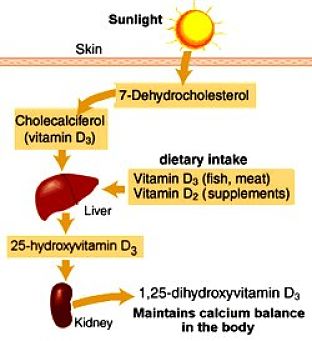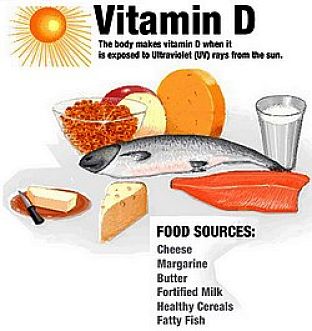Q&A: Vitamin D Deficiency Rate Rising - Call for Adding Vitamin D to Food
There has been an urgent call for Vitamin D to be added to food to overcome the alarming high levels of Vitamin D deficiencies among Australians, particularly in the southern States such as Tasmania and Victoria. Research studies have shown that vitamin D is below recommended levels in 60-70% of adults and teenagers during the winter months. Throughout the world there is growing deficiencies associated with people spending more and more time indoors. Ironically some of the blame for low vitamin D is associated with skin cancer campaigns that have encourages people to stay out of the sun. Most of this essential vitamin can be made by your own body through exposure to UV sunlight. However these campaigns are flawed as well because scientific evidence supporting the use of sunscreens to prevent skin cancer is weak.
Telling people to stay out of the sun causes vitamin D deficiencies. Encouraging people to use sunscreens has been shown in many studies to increase the risk of skin cancer because people don't use the right product and don't use it properly. They can become lulled into a false sense of security and spend more time outside in the blazing sun than they would otherwise, using common sense to avoid sun exposure during the middle parts of the day.
Vitamin D is essential for general bone health and muscle strength. Deficiencies in this essential vitamin have been associated with an overall increase in the general risk of mortality, multiple sclerosis, type 1 diabetes, colorectal cancer, depression, cardiovascular diseases, tuberculosis and other infections. Recent Australian research has shown a significant association between speech difficulties in young children and low levels of vitamin D in their mothers during pregnancy.
The alarmingly high levels of vitamin D deficiencies in Victorians and Tasmanians has triggered pressure being applied to authorities to add the vitamin to food. Canada and several other countries already add vitamin D to foods such as yoghurt, milk and margarine.
While you can get vitamin D from oily fish and other types of food, the products containing high levels of vitamin D are not items that most people include in their diets, and the amount required to be eaten can be unrealistic. People would have to consume about one and a half tins of sardines or 100 grams of vitamin D-rich mushrooms or beans every day to get enough vitamin D in their diets. Supplements added to foods if a much better way.
There are various articles that list the Vitamin D levels in various foods
There are great challenges ahead to ensure that people enough sun exposure without the risk of potential skin cancers and to get enough Vitamin D in their diets.

